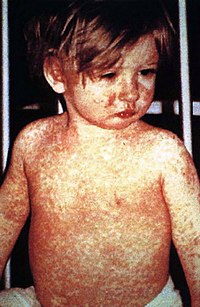
Generalized hypertrichosis associated with the use of interleukin 17 blockers in 2 patients with psoriasis
Sign Up to like & getrecommendations! Published in 2020 at "JAAD Case Reports"
DOI: 10.1016/j.jdcr.2020.05.023
Abstract: IL: interleukin PASI: Psoriasis Severity Index INTRODUCTION Hypertrichosis is excessive hair growth on the noneandrogen-dependent areas. It can be congenital or acquired and localized or generalized. Hypertrichosis has been associated with various prescription drugs such… read more here.
Keywords: hypertrichosis associated; use interleukin; generalized hypertrichosis; hypertrichosis ... See more keywords

Acquired Localized Hypertrichosis Following Pressure Garment and/or Silicone Therapy in Burn Patients
Sign Up to like & getrecommendations! Published in 2019 at "Annals of Plastic Surgery"
DOI: 10.1097/sap.0000000000001686
Abstract: Abstract Hypertrichosis is characterized by excessive and abnormal hair growth anywhere on the skin and may develop after prolonged local irritation, such as application of a cast, injury, or a bite. Pressure garment/silicone therapy is… read more here.
Keywords: pressure garment; garment silicone; hypertrichosis; silicone therapy ... See more keywords

Severe hypertrichosis in infants due to transdermic exposure to 5% and 7% topical minoxidil
Sign Up to like & getrecommendations! Published in 2020 at "Dermatologic Therapy"
DOI: 10.1111/dth.14230
Abstract: We report three cases of severe hypertrichosis in healthy infants, who did not present any type of endocrinological pathology and whose parents used topical minoxidil for the treatment of their baldness. Any type of direct… read more here.
Keywords: severe hypertrichosis; topical minoxidil; hypertrichosis; hypertrichosis infants ... See more keywords

Switching from reference adalimumab to biosimilar. Assessment of clinical outcomes in psoriasis
Sign Up to like & getrecommendations! Published in 2022 at "International Journal of Dermatology"
DOI: 10.1111/ijd.16399
Abstract: hypertrichosis in this child. The treatment was stopped, and the patient was switched back to tacrolimus. No treatment was performed on our pediatric patients because safe treatment was a priority over cosmetic needs. Acquired local… read more here.
Keywords: biosimilar assessment; reference adalimumab; hypertrichosis; alopecia areata ... See more keywords

A child with generalized hypertrichosis due to secondary topical minoxidil exposure.
Sign Up to like & getrecommendations! Published in 2023 at "Pediatric dermatology"
DOI: 10.1111/pde.15329
Abstract: Hypertrichosis is defined as excessive hair growth anywhere on the body in either males or females. It may be caused by genetic conditions, endocrinological disorders, exposure to specific medications (including phenytoin, minoxidil and diazoxide) and… read more here.
Keywords: exposure; hypertrichosis due; due secondary; generalized hypertrichosis ... See more keywords

Pinnae and facial hypertrichosis induced by cetuximab
Sign Up to like & getrecommendations! Published in 2022 at "Journal of Oncology Pharmacy Practice"
DOI: 10.1177/10781552221114073
Abstract: Introduction Anti-EGFR targeted anti-cancer treatment is associated with various skin adverse events. Cetuximab is often associated with acneiform papules and skin disorders. Hypertrichosis cited in face pinnae and eyelash trichomegaly are seldom described. Case report… read more here.
Keywords: hypertrichosis induced; induced cetuximab; hypertrichosis; facial hypertrichosis ... See more keywords

Prospective Case Series of Clinical Signs and Adrenocorticotrophin (ACTH) Concentrations in Seven Horses Transitioning to Pituitary Pars Intermedia Dysfunction (PPID)
Sign Up to like & getrecommendations! Published in 2022 at "Veterinary Sciences"
DOI: 10.3390/vetsci9100572
Abstract: Simple Summary Pituitary pars intermedia dysfunction (PPID) is a common disease of the geriatric horse population. The most common clinical sign of PPID is hypertrichosis, or a long hair-coat with delayed shedding. Hypertrichosis is the… read more here.
Keywords: basal acth; stimulated acth; hypertrichosis; trh stimulated ... See more keywords